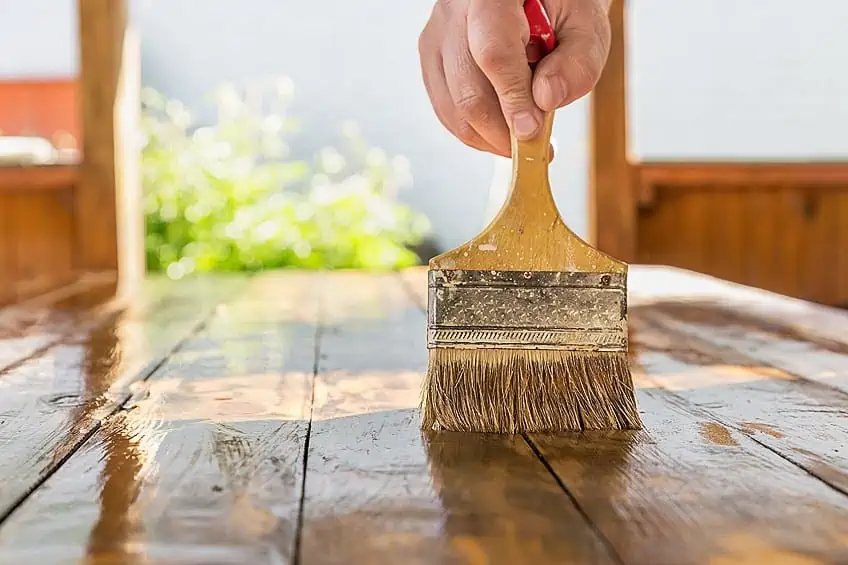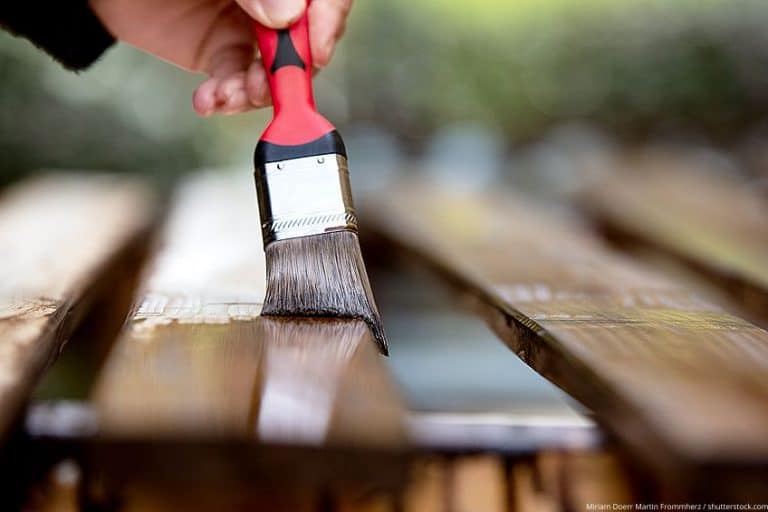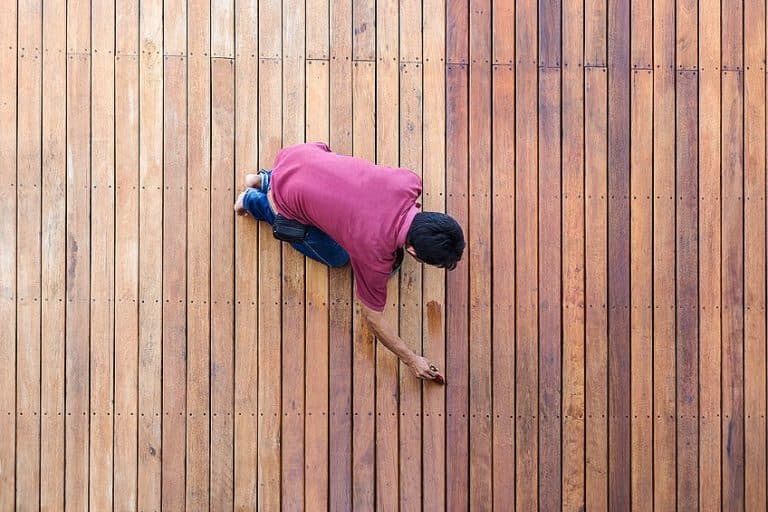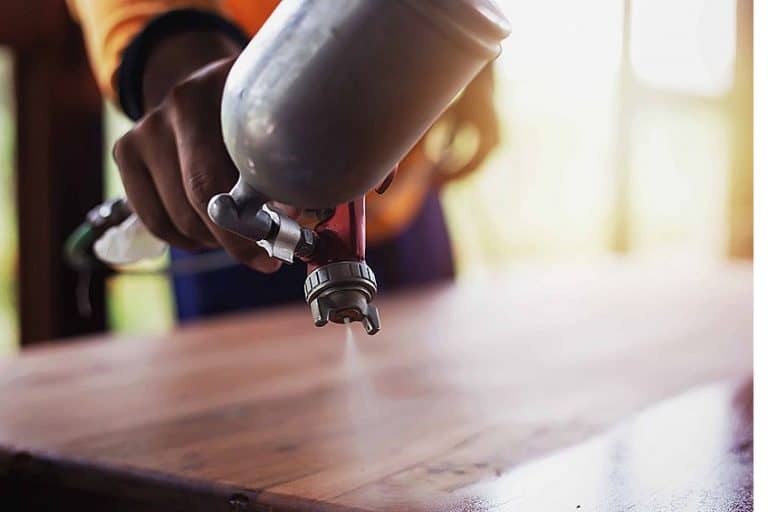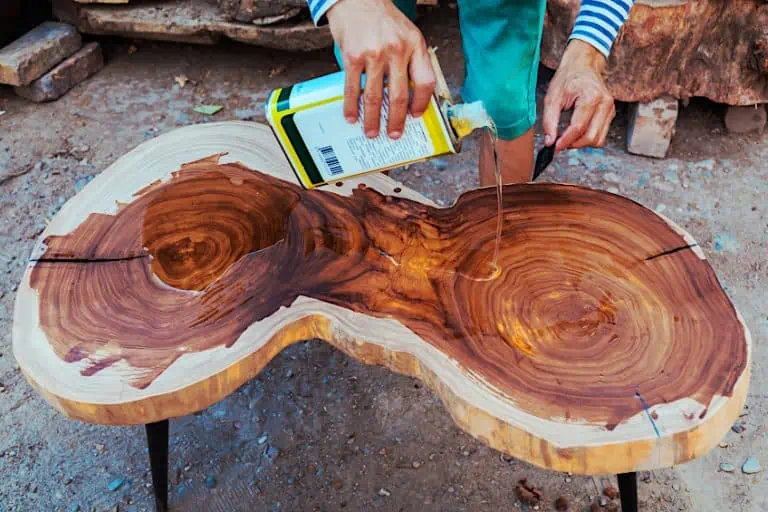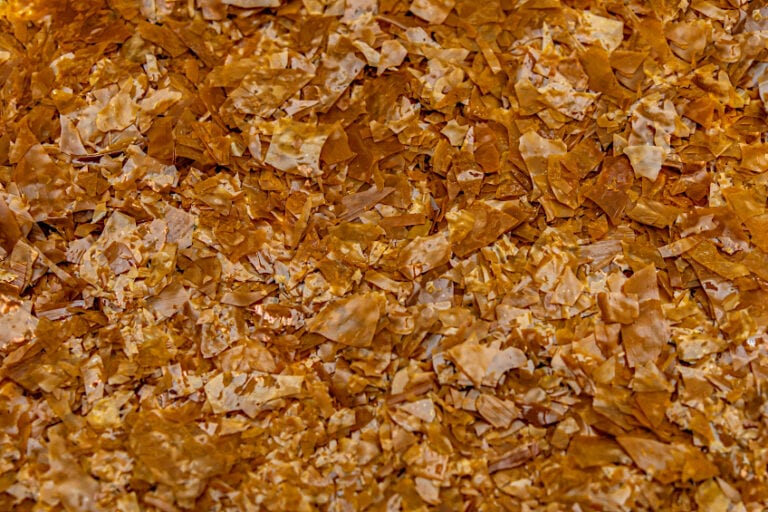How to Varnish Wood – Your Guide for Perfect Wood Finishes
When it comes to varnishes, advances have caused newer varnishes to be quite different from older varnish types. Modern varnishes are an eclectic mix of beauty, hardness, and firmness which makes them rather easy to use. Varnishing a surface is as easy as painting a surface. Looking at some of the best wood varnishes is a good starting point if you are considering varnishing a surface.
Table of Contents
Variations in Varnishes for Wood
Wood varnishes may vary according to their main ingredient, which in turn will affect the kind of wood on which it can be used.
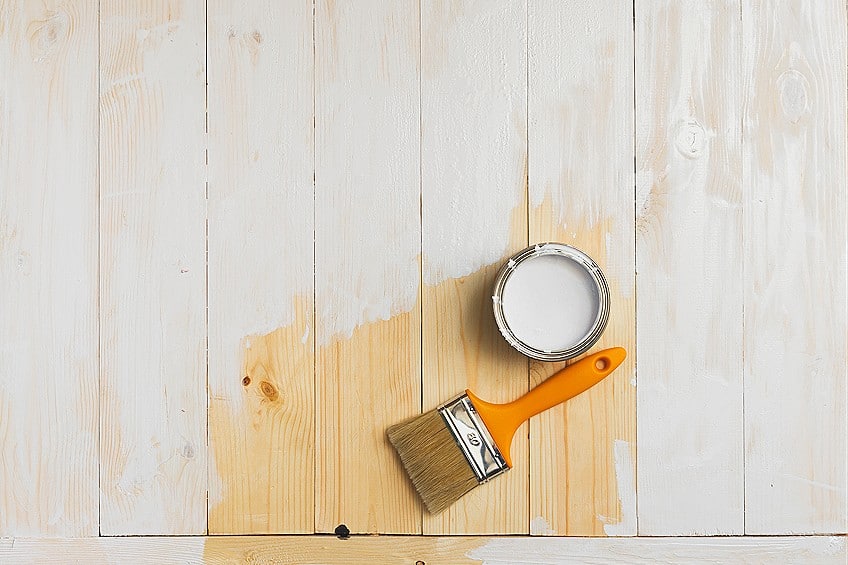
The Water-Based Varnish
Some of the best wood varnish types fall under this category of varnish. The Water-based varnish option is quick-drying and can effectively be used on any wooden surface. If a surface has been stained or painted, the varnish can still be applied to it.
- Use synthetic brushes to apply this varnish.
- You can expect the clear varnish to enhance the natural look of the grain without making the surface look yellow over time.
- It may not be as long-lasting as other varnish alternatives.
The Lacquer Wood Finish
Wood lacquer is developed using nitrocellulose and other solvents. The wood lacquer produces both a glossy or matte finish to wooden surfaces.
- Wood lacquer looks pleasing on furniture.
- It is best to avoid applying the wood lacquer to surfaces that have already been varnished or look old due to prior paint application.
- Wood lacquer can be sprayed on surfaces regularly. Once sprayed, a thin varnish coat is left behind which dries easily.
- The formula must be applied in a well-ventilated room as it does emit strong fumes when applied.
- Wood lacquer is longer-lasting than shellac.
- It is recommended as an excellent wood sealant.
Wood Varnish Finish
Most wood varnish formulas are made using resin, solvent, thinner, and drying oil.
- The wood varnish results in a finish that is crystal-clear.
- It is used as an exterior finish and is suitable to be used on boat decks, doors, and exterior wooden surfaces.
- It can be applied to painted wood or wood that has never been touched.
- It is a cheaper alternative, but its slow-drying formula means it can collect dust easily.
- Varnish is known for being one of the best wood sealants.
The Polyurethane Wood Finish
As a wood finish, the polyurethane wood finishes are labeled as synthetic coatings. They are a clear varnish that offer great protection for wooden surfaces. They also ensure long-lasting protection.
- Despite it being a clear varnish, the color may turn yellow or crack when used on exterior wood.
- There is an option to prevent yellowing by ensuring the formula has added ingredients to make it resistant to UV damage.
- The clear varnish produces a delightfully natural appearance with glossy sheens which means it is ideal for interior wooden surfaces.
The Oil-Based Wood Finish
In comparison to most finishes, the oil-based finish dries rather slowly. Another aspect of the oil-based formula is that it produces a strong smell when it is applied.
- The oil-based finish can be applied effortlessly using a cloth or brush.
- It is not recommended to use an oil-based finish on surfaces that get exposed to activities often.
- Wine and watermarks will be visible on oil-based surfaces.
The Shellac Wood Finish
The shellac wood finish is made from lac insect secretions. The lac insect gives off a wax-like resin that has protective qualities.
- The shellac finish can be applied to wooden floors, furniture, and other antique furniture.
- If a surface is in contact with alcohol and moisture, the protective layer may break down.
- To apply shellac it is best to amalgamate the shellac substance with solvents. Adding alcohol to the shellac formula makes the wax-like substance easier to apply.
Furniture Wax
As the name suggests, furniture wax ensures a subtle and smoother finish on surfaces. Furniture wax is made from mixing beeswax and leaves.
- Is not advisably an exterior varnish.
- If we perform an exterior wood finish comparison, we note that furniture wood wax offers less durability than other finishes. The issue of less protection can be handled by simply reapplying the varnish.
- Use a paintbrush or cloth for application to result in the perfect matte finish.
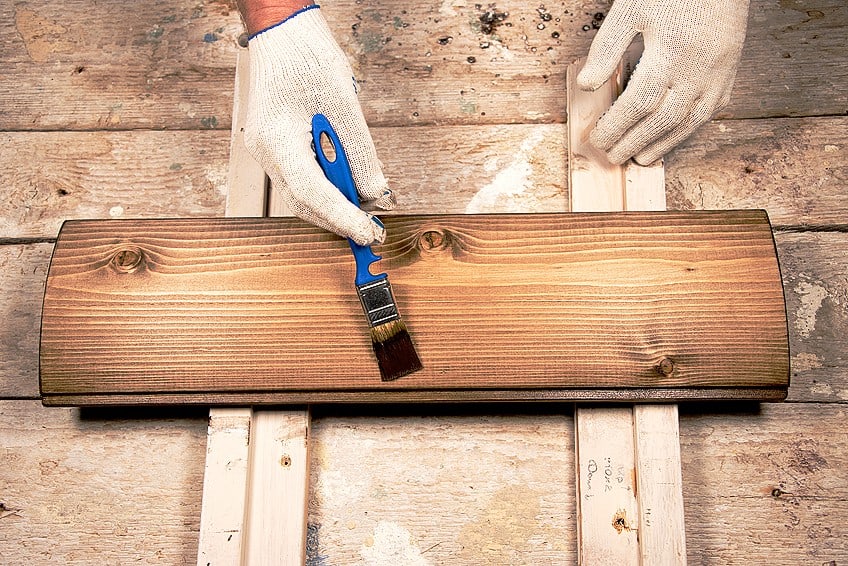
Steps for using wood varnish
Irrespective of which type of wood varnish you decide on using, it is best to get rid of any pre-existing stains, waxes, dirt marks, etc. and work on a clean surface.
To ensure no dust mites or dirt settles on a surface that you are applying varnish to, work in a clean work area. This will ensure that no dust settles on the wood, thus ruining its appearance and finish entirely.
Handymen advise that you use a brush that has natural fibers when working with oil-based varnishes. Synthetic bristles or nylon brushes work best to apply water-based and acrylic finishes.
Remember the brand and type of wood varnish that you select fully determines the actual application process. Since all products come with instructions included or attached, ensure that you follow these instructions thoroughly. You cannot simply choose which steps to omit when it comes to varnish applications as it may spoil the finish.
Some tips to ease the application process:
- Decide to varnish on the least humid day of the week. Ensure that the day isn‘t an overcast either. Varnishes dry slowly on humid and cold days which means there is a greater chance of dust mites settling on exterior wood surfaces. If you are working inside the house, use central heating to achieve a temperature between 20 and 25°C. Working in a very hot room means the varnish will dry too rapidly and bubbles may form.
- To work in a clean area, start by vacuuming surfaces first. You may have to mop up as well to prevent floor dust from affecting varnished surfaces.
- Always start with a clean surface. Achieve this clean finish by removing any old varnish or paint. You can opt for a varnish remover or stripper.
- Sanding the wood is also desirable prior to actually applying the wood varnish. This way, you can prevent surface problems from ruining your finish. After sanding use a damp cloth to further clean the surface and remove deadwood.
- Always use fine sandpaper to sand so as not to further damage the wood.
- When applying the initial coat, paint using the grain direction as a guide. Allow the first coat to settle. Thereafter you can think about sanding or adding more varnish coats.
- To ease the application process, you can thin the first coat. However, newer water-based alternatives are already rather thin. The varnish must sit on a surface for an entire day before you can sand again for the application of the coat thereafter.
- Apply all the coats needed to ensure an excellent finish. Most professionals recommend applying between 2 to 3 coats. Yet again there has been no harm noted when further coats are applied and it can only lead to more protection and a more desirable finish. You must sand between coatings, although you never sand after your final coat has been carefully applied.
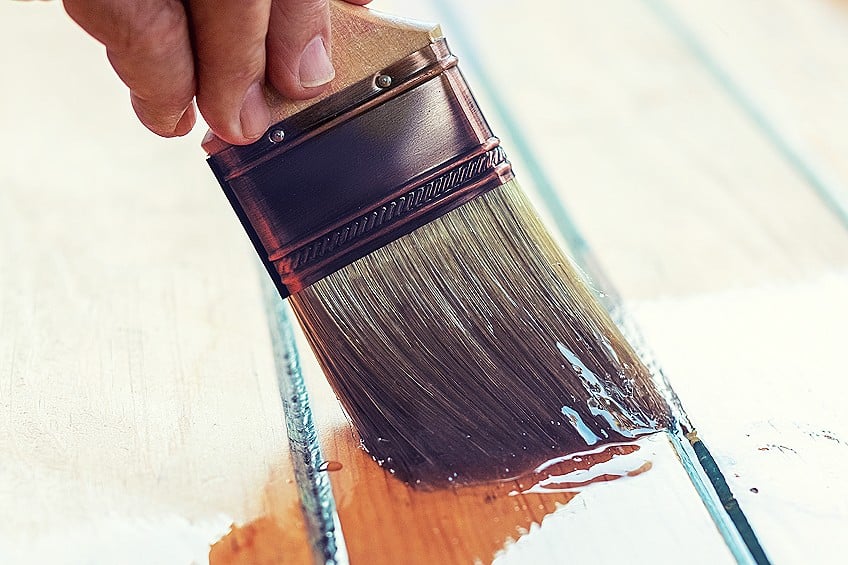
The Curing Process for Varnishes
As novices, we need to know everything about the varnish that we are working with to achieve the best results. You must note that wood varnish hardens in one of two ways:
Instant Hardening: For certain varnish types, they harden instantly causing the solvent to evaporate. Due to no solvent, the varnish’s ingredients like resin and oil become hard and dried. It does take longer than an instant for the surface to fully dry. Hence, wait for a few hours but know that once the surface is fully dried, the varnish will become hard and the surface can be used immediately.
Gradual Hardening: As with other varnishes, the oils and resin continue to react even after evaporation of the solvent has occurred. While it may appear completely dried after a day, the reaction between resin and oils continue for a few days thereafter. Exposing the surface to air encourages the oxidation process to take place. Thereafter the surface will be totally cured.
Each varnish type is different and it is mainly the ingredients of varnishes that help us establish how much time will be required for the full curing process. Various additives incorporated into varnishes may further affect the hardening process. The varnish color, its durability, etc. are additives that can reduce or increase the curing process.
As previously mentioned, the temperature on the day you apply the varnish also has a drastic impact on the hardening process. Hence, decide to apply varnish on a day that offers the best temperature for medium-paced drying. Humid days cause the varnish to dry faster and in turn, may lead to an imperfect finish. You should read the instruction manual to see which temperatures are best for the substance to dry at the appropriate pace.
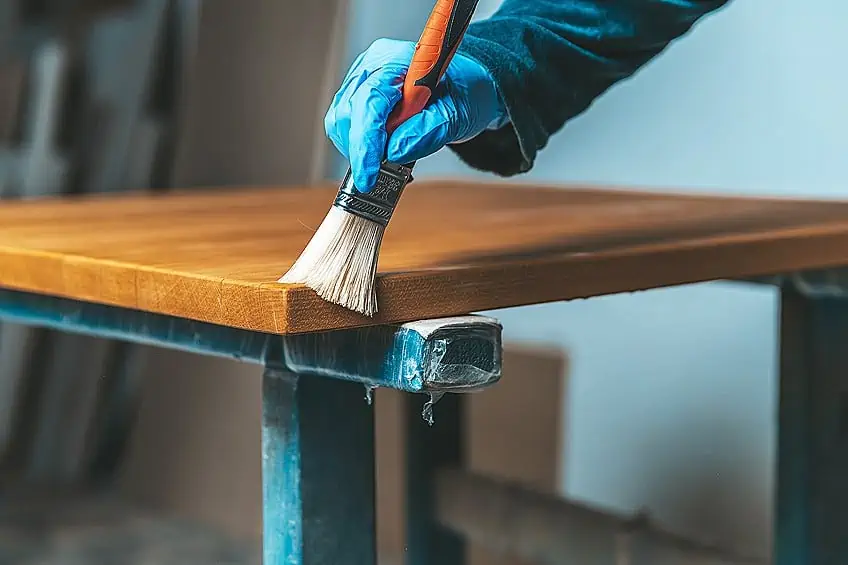
View our Wood Varnish web story here.
FAQ’s
Will Varnish Improve the Waterproof Quality of Wood?
Basically, any varnish is a mixture of solvent, oil, and resin which protects wood surfaces from damage and scratches. If you would like this waterproof property for your wooden surface, use an exterior varnish like a marine varnish.
Is Polyurethane Better Than Varnish?
Varnish existed prior to polyurethane. The varnish is created by amalgamating oils, solvent, and resin. The polyurethane is simple water or an oil-based resin. Using varnish is advisable as it offers more protection against sun damage. Varnish does, however, need to be applied in several coats to obtain the desired finish.
Can Bare Wood be Appropriately Varnished?
Yes, varnish can be applied to bare wood as well as already finished wooden surfaces. The idea of applying varnish is to ensure protection from things like water damage, grease settling on the surface, or dirt affecting the appearance of the wood. If the varnish is properly applied, an ideal glossy finish is ensured.

I have been into woodworking since 2005 and woodturning since 2011. Because of my love for wood and woodworking, I started woodhappen.com to teach other enthusiasts about how to finish and seal wood, the best woodworking tools, the different types of wood, and everything else related to woodworking! Read more about me here.

